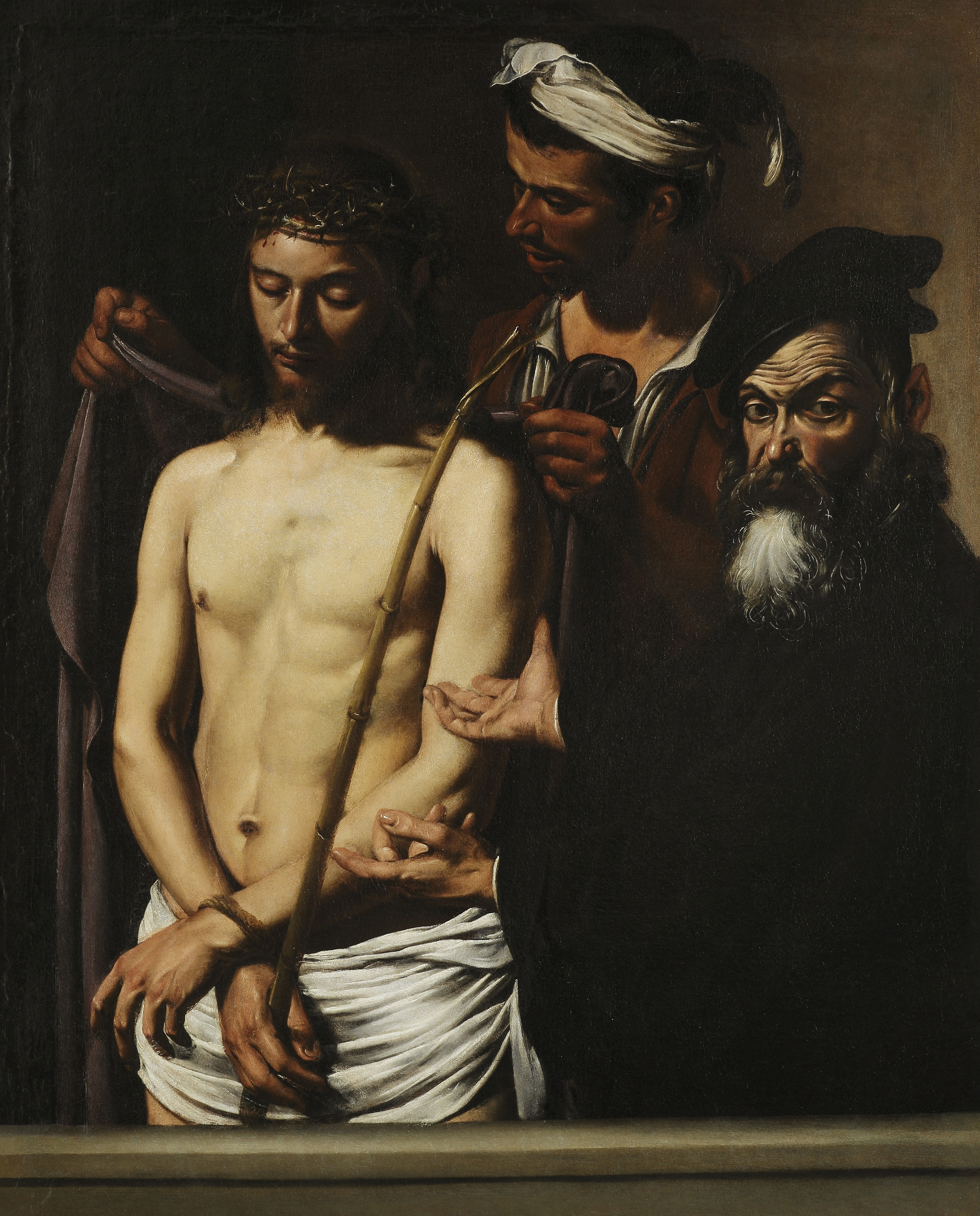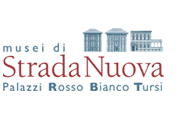
Click here to view image
Ecce Homo
1908 ? Genova - acquisto
Caravaggio, Merisi Michelangelo
painting
1605 - 1605 - XVII
PB 1638
Unità di misura: cm; Altezza: 128; Larghezza: 103
olio su tela
Caravaggio e i Genovesi - Committenti, collezionisti, pittori - Genova, Palazzo della Meridiana - 14/02/2019 - 24/06/2019<br>Caravage à Rome. Amis et ennemis - Parigi, Musée Jacquemart-André - 21/09/2018 - 28/01/2019<br>Unescosites / Italian Heritage and Arts - Taormina, Palazzo Corvaja - 07/05/2017 - 31/07/2017<br>CARAVAGGIO and His Time Friends, Rivals and Enemies - Tokio, The National Museum of Western Art - 01/03/2016 - 12/06/2016<br>Two Centuries of Italian Masterpieces. Caravaggio to Canaletto - Budapest, Museo di Belle Art di Budapest - 25/10/2013 - 16/02/2014<br>Bodies and Shadows: Caravaggio and His Legacy - Los Angeles, LACMA - 11/11/2012 - 10/02/2013<br>Corps et Ombres: Caravage et le caravagisme européen - Montpellier, Musée Fabre - 22/06/2012 - 14/10/2012<br>Caravaggio: Behold the Man - Ohio, Columbus Museum of Art - 21/10/2011 - 05/02/2012<br>La Fuga - Genova - 2010<br>Caravaggio - Barcellona - 2005<br>Van Dyck a Genova. Grande pittura e collezionismo - Genova - 1997<br>Domenico Fetti - Mantova - 1996<br>Caravaggio - Firenze - 1992<br>Genova nell'età barocca - Genova - 1992<br>Michelangelo Merisi da Caravaggio. Come nascono i capolavori - Firenze - 1991<br>Caravaggio e il suo tempo - Napoli - 1985
The canvas is first recorded in the early 1920s in the inventory of Palazzo Bianco as “Lionello Spada (copy),” with no indication of provenance; evidently considered to be of modest value, it was transported in 1929 to the villa Cambiaso owned by the city and remained there until World War II. Severely damaged by bombing, the painting was ignored until 1951 when, in the Milan exhibition Caravaggio e i caravaggeschi curated by Roberto Longhi, another version of the same subject preserved at the Regional Gallery of Messina was exhibited (Caravaggio Exhibition 1951, p. 43), considered a “crude copy” but “fairly faithful” of a lost Caravaggio original. Caterina Marcenaro, then Director of the City's Fine Arts Office, identifies the Lombard master's autograph redaction in the Palazzo Bianco's Ecce Homo, which is, after major conservation work by Pico Cellini (1953-54), published as a Caravaggio original by Longhi himself in the magazine “Paragone” in 1954. Subsequent critics accept the attribution to Merisi with discordant results; and on the one hand, two factors weigh over time on the evaluation of the painting: the non-integrity of the painting's original pictorial ductus, which Cellini describes after war damage as “fried and dried up bark all subbolito...” which he restored to legibility with an integrative restoration conducted by taking the Messina copy as a model; on the other hand, the mystery about the painting's early history and the time of its entry into the museum's collections. Only recently, in fact, has an archival document been found, dated 1908, which reports a purchase proposal made to Orlando Grosso, then specialized secretary of the Fine Arts Office, for works formerly belonging to Giovanni Cabella, including a “Leonello Spada, Cristo mostrato al popolo, good work of painting of the Bolognese school of the seventeenth century preserved in excellent condition,” thus reported by the scholar as the most deserving of entry into the municipal collections (Biblioteca Civica Berio, Fondo Orlando Grosso, Cassetto 21, fascicles 6-7, pp. 91 r-v). The official deed of acquisition has not been traced, but it is probable then that it followed by a few years, and that in any case the work was not registered until after World War I, ending up being inventoried for this reason along with others that had survived in the meantime, in particular the numerous canvases of the legacy of Casa Piola (1913) that also included many 'author copies' (Besta, Priarone in “Superba ognor di belle Imprese andrai” 2020). And this is probably why the “Leonello Spada” seen by Grosso becomes “Spada (copy)” in the museum register -with the same diction as all other copies from great masters- and then, in the second version of the inventory, more clearly a “copy from Spada Leonello.” It does not seem inappropriate to draw attention precisely to the complex vicissitudes of the inventory of the painting, and the subsequent interpretation of the inventory data, since the notation 'copy by Lionello Spada' was then reported by critics for a long time as 'copy by Lionello Spada,' thus reading the inventory data as recording not a work derived from a prototype by Spada, but a work by Spada's hand from an original by Caravaggio (on these aspects Besta, Priarone in c.d.s.). For this reason, too, subsequent diagnostic campaigns on the work (Gregori, Lapucci 1991; Orlando in Caravaggio and the Genoese 2019; Bonavera in Caravaggio and the Genoese 2019) have particularly aimed at looking for signs of early invention of the composition, finding 'pentimenti' that have led to the exclusion of its character as a copy, confirming the nature of a first version of the subject. But it is still legitimate to ask: at the hands of whom? The attribution to Caravaggio has been consolidated over time (Spike 2013), partly because of the historical identification with the picture painted by Merisi for the Roman nobleman Massimo Massimi (Barbiellini Amidei 1987), which, however, according to the documents, would have had larger measurements than the Genoese canvas, although tampered with over time (Di Fabio 1997; Priarone 2011, pp. 104-105 note 54). The hypothesis that this is the same canvas by Merisi that later arrived in Sicily in the retinue of Juan de Lezcano, secretary to the Spanish ambassador to the Holy See, would explain, according to some scholars, the presence of the Messina copy; from here the work would later pass to Naples, Madrid and Genoa (Vannugli 2009). Attributive doubts have continued to accompany the painting, which still does not see unanimous recognition and is back in the public spotlight after the discovery of another autographed version of the same subject, of a different composition, appeared in 2021 in a Madrid auction, which more convincingly could be linked to the documents previously connected to the Genoese painting (Besta, Priarone in Caravaggio and the Genoese 2019). Il dipinto rappresenta Cristo con la corona di spine, a fianco a loro un uomo e Pilato.




